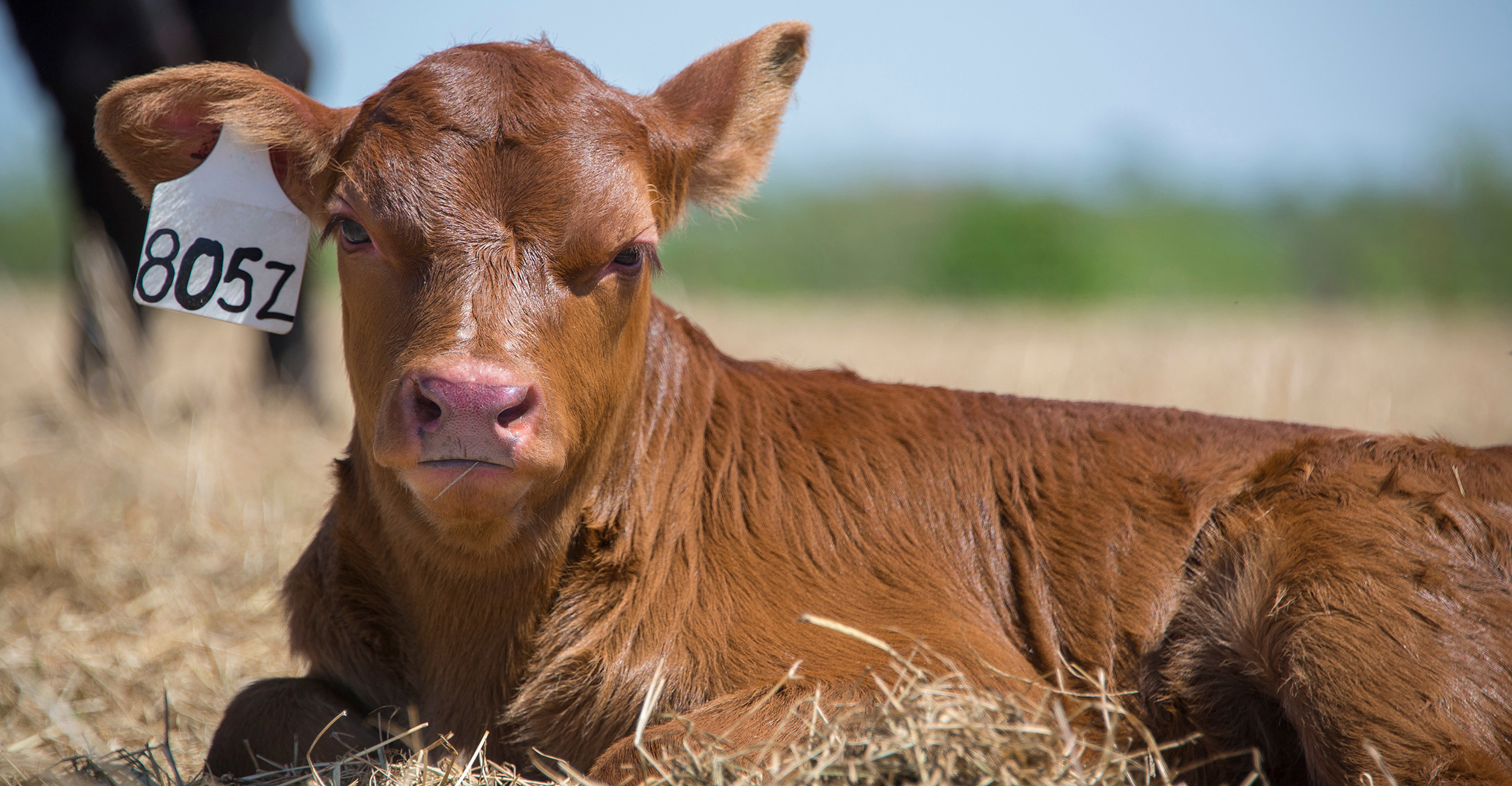
Veterinary Viewpoints: Importance of Hydration When Scouring Calves
Monday, May 2, 2022
Media Contact: Kaylie Wehr | OSU College of Veterinary Medicine | 405-744-6740 | kaylie.wehr@okstate.edu
Dehydration, loss of electrolytes and decrease in blood pH (metabolic acidosis) are the three biggest problems with scouring calves. That means supportive treatment with fluid and electrolytes is vital, regardless of the cause of scours. Often, those life-saving fluids can be given orally.
There are some quick and simple ways to evaluate dehydration levels of scouring calves by examining skin tenting, presence of sunken eyes, gum condition, attitude and ability to stand or suckle.
-
Skin tenting is a quick way to evaluate hydration. Pinch a fold of skin on the neck or around the eyes and count the number of seconds it takes to flatten. If the skin flattens in less than 2 seconds, this indicates normal hydration. If the skin takes 2-5 seconds to flatten, the calf is about 8% dehydrated. More than five seconds would indicate severe dehydration over 10%.
-
The more sunken the eyes look, the more dehydrated the calf is. If the eye is right there under the eyelid, hydration is fairly normal. If you roll down the lower lid and see a visible space there, this indicates dehydration.
-
Gum color and moisture can also be evaluated. Normal gums will be pink and moist, while pale pink to white and dry gums indicate dehydration.
-
Finally, a calf’s ability to stand and suckle is often the best indicator of the level of dehydration. Calves showing mild depression, weakness and sunken eyes but with good suckle reflex are 6-8% dehydrated. A calf that will not stand, has no suckle reflex and has cool extremities (from poor blood circulation to legs and feet) is in serious condition with a dehydration level of 10-12%.
Scouring calves that have a suckle reflex and are still able to stand can be given oral electrolytes. Those that are down with no suckle will usually need intravenous fluids. The key is to be proactive and start supportive therapy as soon as dehydration is detected. To determine the amount of electrolytes to give per day, we must consider the calf’s weight, how much fluid he would normally drink in a day, his degree of dehydration, and how much is he continuing to lose via diarrhea.
For example, a 150-pound calf off feed (not nursing) and scouring would typically need about 4 quarts of fluid per day just for maintenance and will drink nearly twice that much milk. If he is dehydrated just 5%, he will need an additional 4 quarts [150lb calf x 0.05 (5 percent dehydration) = 7.5 pints = ~4 quarts] of oral electrolytes to get rehydrated. During a 24-hour period, this calf would need about 8 quarts to satisfy his deficit and maintenance, plus what he is continuing to lose via diarrhea. He might need 10 or more quarts of fluid in a day, split into three or four feedings.
It is recommended to not mix the oral electrolytes with milk replacer. Instead, it should be given as a separate meal on an alternate basis with milk replacer (bottle-fed calf) or whole milk (calf nursing on his dam) and split in multiple feedings per day. It is also important to provide scouring calves access to fresh water at all times.
It is easier to buy a commercial calf oral electrolyte than try to mix the ingredients you would need for reversing electrolyte imbalances. Oral electrolyte solutions typically have sodium, chloride and potassium (the actual electrolytes) plus an energy source to aid sodium absorption, as well as provide a little energy for the weak calf. Commercial electrolyte solutions also contain a buffer (bicarbonate, acetate, and citrate) to counteract the calf’s acidosis secondary to scouring. All of them have various advantages, depending on the calf’s situation. Be sure to ask your veterinarian what he or she recommends and that you are selecting brands of products that are shown to be highly effective.
About the author: Dr. Melanie Boileau is a professor in the Department of Veterinary Clinical Sciences at Oklahoma State University’s College of Veterinary Medicine. She serves as the Food Animal Service Chief, as well as the Large Animal Section Chief at the OSU Veterinary Teaching Hospital. Boileau is the chair of the McCasland's Clinical Professorship and a Diplomate of the American College of Veterinary Internal Medicine – Large Animal.
Veterinary Viewpoints is provided by the faculty of the OSU Veterinary Medical Teaching Hospital. Certified by the American Animal Hospital Association, the hospital is open to the public providing routine and specialized care for all species and 24-hour emergency care, 365 days a year. Call 405-744-7000 for an appointment or more information.
OSU’s College of Veterinary Medicine is one of 32 accredited veterinary colleges in the United States and the only veterinary college in Oklahoma. The college’s Boren Veterinary Medical Hospital is open to the public and provides routine and specialized care for small and large animals. The hospital offers 24-hour emergency care and is certified by the American Animal Hospital Association. For more information, visit https://vetmed.okstate.edu/ or call 405-744-7000.
